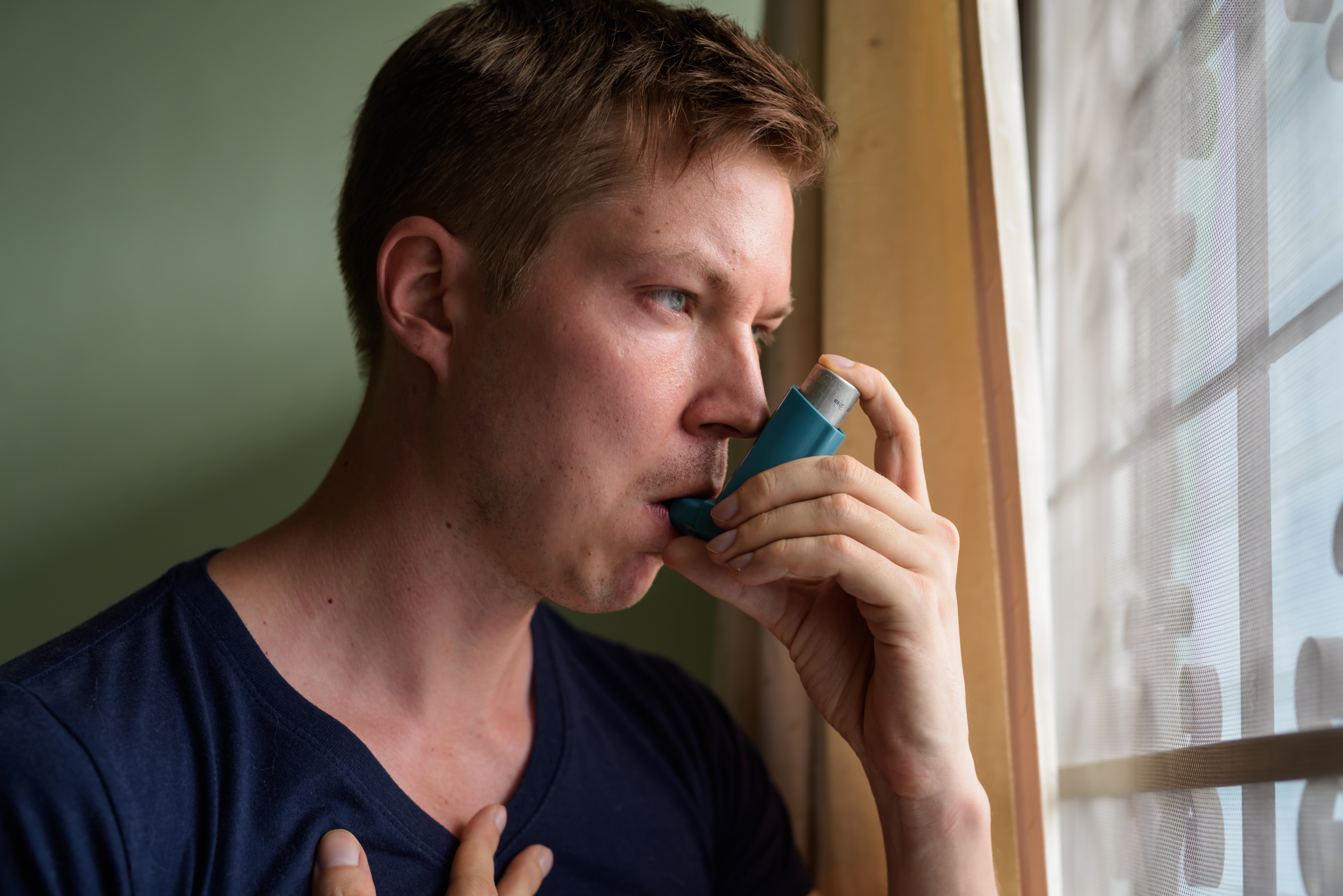10 Breathtaking Varieties of Asthma: Your Ultimate Navigator's Guide
Asthma isn’t just one condition—it’s a spectrum of respiratory challenges that can look wildly different from person to person. While most people associate asthma with wheezing or shortness of breath, the truth is far more nuanced. Some individuals experience daily symptoms, while others may go months without a flare-up—until a single trigger like cold air or exercise brings on a sudden attack. From allergic and exercise-induced variants to more complex, treatment-resistant types, asthma wears many faces. And understanding which type you're dealing with is key to managing it effectively. Whether asthma first emerged in childhood or snuck up in adulthood, no two cases are exactly alike. That’s why we’ve expanded our guide to include 10 Breathtaking Varieties of Asthma: Your Ultimate Navigator’s Guide—a deep dive into the different forms, triggers, and treatment strategies that empower you to breathe easier and live smarter. The more you know, the more control you gain over your lungs—and your life.
1. Exercise-Induced Asthma

The type of asthma frequently triggered by strenuous physical activity is referred to as exercise-induced asthma. An individual affected by exercise-induced asthma may start to have symptoms during or shortly after physical activity. Without proper treatment, a patient can experience symptoms such as wheezing, chest tightness, pain, poor athletic performance, coughing, activity avoidance, fatigue during exercise, and shortness of breath for sixty minutes or longer. These symptoms are the result of the bronchoconstriction that occurs in affected individuals. The exact mechanism of what causes this bronchoconstriction is unclear, but excess mucus production and inflammation are known to play key roles in the process. Untreated exercise-induced asthma can cause an affected individual to perform poorly in activities they would usually enjoy, have a lack of beneficial physical activity, and experience life-threatening breathing difficulties. Diagnosis of exercise-induced asthma is made with a physical examination and spirometry tests. Treatment may include the use of pre-exercise medications and long-term control medications.
2. Allergic Asthma

The most prevalent form of asthma that occurs among the general population is called allergic asthma. An individual affected by allergic asthma has an immune system that inappropriately responds to harmless stimuli, such as pet dander and pollen. The patient's immune system produces molecules referred to as IgE antibodies in response to the harmless substance. IgE antibodies promote a cascade of reactions that cause the patient to experience a runny nose, swelling, sneezing, and airway muscle contraction. The affected individual's airways flood with mucus and experience inflammation. The symptoms that occur in an allergic asthma patient once an allergy cascade has been activated include coughing, shortness of breath, chest tightening, wheezing, and fast breathing. Common substances known to trigger symptoms of allergic asthma include grass pollen, tree pollen, ragweed pollen, hair dander, skin dander, feather dander, cockroaches, mold, and dust mites. Treatment of allergic asthma includes the use of short and long-acting medications to control allergies, reduce inflammation, and relax the airway muscles.
3. Non-allergic Asthma

Nonallergic asthma refers to a type of asthma where an affected individual's immune response is not involved in its pathogenesis and triggers. The only antibodies involved in nonallergic asthma are localized IgE antibodies in the patient's airways. The symptoms in nonallergic asthma are not triggered by an external allergen that activates the immune system, but an external irritant instead. Such triggers include everyday irritants that occur outside of the body, including tobacco smoke, cold air, perfumes, dry air, wood smoke, fireplace smoke, exposure to certain drugs, air pollution, strong chemical odors, and scented products. Irritants that occur inside of an affected individual's body that can trigger symptoms include excessive laughing or crying, mental or emotional stress, anxiety, viral or bacterial infection, fluctuations in hormones, and acid reflux. Nonallergic asthma is diagnosed by ruling out other conditions and types of asthma. Nonallergic asthma patients have a negative result on their aeroallergen spirometry and skin allergy tests.
4. Occupational Asthma

A form of asthma that develops in an individual as a result of the inhalation of certain substances when they are on the job is referred to as occupational asthma. While symptoms of occupational asthma are similar to those in other forms, certain factors can help distinguish it. These factors include an increase in symptom severity as the workweek progresses, a decrease in symptoms when on weekends and vacations, and symptoms that worsen or recur upon returning to work. Occupational asthma can only develop after an initial extended period of routine exposure to the triggering substance. The greater the duration of when an individual is exposed to the triggering substance, the longer they will experience symptoms when they cease exposure completely. Occupational asthma can be caused by animal proteins found in hair, fur, body wastes, dander, scales, and saliva. Chemicals used to produce insulation, upholstery, packaging materials, foam mattresses, paints, adhesives, soldering resin, varnishes, and laminates are also causes of occupational asthma. Other substances implicated in occupational asthma include flour conditioner enzymes, platinum, nickel sulfate, chromium, rubber latex components, cereal proteins, flax proteins, rye, papain, cotton proteins, hemp, chlorine gas, smoke, and sulfur dioxide.
5. Adult-Onset Asthma

The type of asthma that develops in individuals in their adult years who have not been previously diagnosed with any form of asthma is referred to as adult-onset asthma. A patient's asthma is considered to be adult-onset asthma if they have reached their second decade of life. Some individuals are at a higher risk of developing this type of asthma, such as pregnant women, women going through menopause, women who have used estrogen after menopause for an extended period, individuals with recent respiratory illness, those with allergies, gastroesophageal reflux disease patients, and individuals frequently exposed to external or occupational irritants. Adult-onset asthma is different from childhood forms of asthma because the adult lungs have a different capacity and some functional differences when compared to the lungs of a child. Adult-onset asthma is diagnosed using a lung function test, methacholine challenge, and chest x-rays. Treatment of adult-onset asthma may include a combination of corticosteroids, short-acting bronchodilators, long-acting bronchodilators, and certain lifestyle changes.
6. Cough-Variant Asthma

Unlike traditional asthma, cough-variant asthma (CVA) doesn’t present with the hallmark symptoms of wheezing or chest tightness. Instead, it reveals itself through a persistent, dry cough—often worse at night or following exercise, cold air exposure, or talking for long periods. This type is frequently misdiagnosed as post-nasal drip or chronic bronchitis, especially in children. Left untreated, CVA can evolve into classic asthma with full-blown respiratory symptoms. Diagnosis typically requires a methacholine challenge test or spirometry. The good news? CVA responds well to traditional asthma medications like inhaled corticosteroids and bronchodilators. If you have a mysterious, nagging cough that won’t quit—don’t dismiss it. It might be asthma in disguise.
7. Nocturnal Asthma

Nocturnal asthma is a frustrating variant where symptoms like coughing, wheezing, and breathlessness peak during the night, often disturbing sleep. It’s not just inconvenient—it can disrupt sleep cycles, lower oxygen levels, and severely impact quality of life. Nighttime symptoms may be triggered by hormonal changes, reclined posture, cooler air, or allergens like dust mites in bedding. People with nocturnal asthma are more prone to severe asthma attacks and may wake up gasping or coughing violently. Treatment often involves optimizing controller medications, using air purifiers, and elevating the head while sleeping. Managing this type of asthma is key to avoiding dangerous nighttime exacerbations and daytime fatigue.
8. Steroid-Resistant Asthma

While most asthma patients respond well to inhaled corticosteroids, a small but significant group does not—this is known as steroid-resistant or refractory asthma. These individuals may continue to experience inflammation, airway obstruction, and frequent attacks even with high-dose medication. It’s often linked to non-eosinophilic inflammation, smoking history, or genetic differences in steroid response. Managing this type of asthma requires a more complex approach, often involving biologics, macrolide antibiotics, or other immunomodulators. Patients are typically referred to a pulmonologist or asthma specialist for advanced care. This form of asthma can be exhausting, but emerging therapies are offering new hope for those once deemed untreatable.
9. Aspirin-Exacerbated Respiratory Disease (AERD)

Aspirin-Exacerbated Respiratory Disease (AERD), also called Samter’s Triad, is a rare but serious form of asthma linked to aspirin or NSAID use. People with AERD typically also suffer from nasal polyps and chronic sinus infections. Taking aspirin or other NSAIDs can trigger sudden, severe asthma attacks, wheezing, nasal congestion, and eye or facial swelling. Since it’s a non-allergic, inflammatory reaction, even low doses of over-the-counter meds can cause major symptoms. Diagnosis requires a detailed medical history and often an aspirin challenge test under medical supervision. Treatment includes complete NSAID avoidance, leukotriene inhibitors, sinus surgery, and in some cases, aspirin desensitization under specialist care.
10. Eosinophilic Asthma

Eosinophilic asthma is a severe, less common subtype marked by high levels of eosinophils—a type of white blood cell that causes chronic inflammation in the airways. Unlike allergic asthma, triggers aren’t always external allergens but rather immune dysfunction itself. Patients often experience frequent flare-ups, severe wheezing, and poor response to standard inhalers. Blood tests and sputum analysis are used for diagnosis. Treatment usually involves targeted biologics that reduce eosinophil activity, such as mepolizumab or benralizumab. Eosinophilic asthma can feel relentless—but with proper diagnosis and advanced treatment, even the most stubborn cases can be brought under control.
Breathe Easier, Live Better

Asthma isn’t a one-size-fits-all condition—it’s a complex, evolving spectrum of triggers, symptoms, and underlying causes. From exercise-induced flare-ups to rare, treatment-resistant subtypes, each variety demands its own strategy for management and relief. The more you understand your specific type, the more empowered you are to take control—whether that means adjusting medications, avoiding certain triggers, or exploring cutting-edge treatments like biologics or desensitization therapies. We've expanded this guide to 10 Breathtaking Varieties of Asthma to help you decode your symptoms, advocate for better care, and breathe with confidence. Asthma doesn’t get to write your story—you do. So keep learning, stay vigilant, and remember: knowledge is the most powerful tool in your respiratory toolkit. With the right insights and support, you can transform asthma from a constant struggle into a condition you manage on your own terms—and get back to living fully, one strong, clear breath at a time.